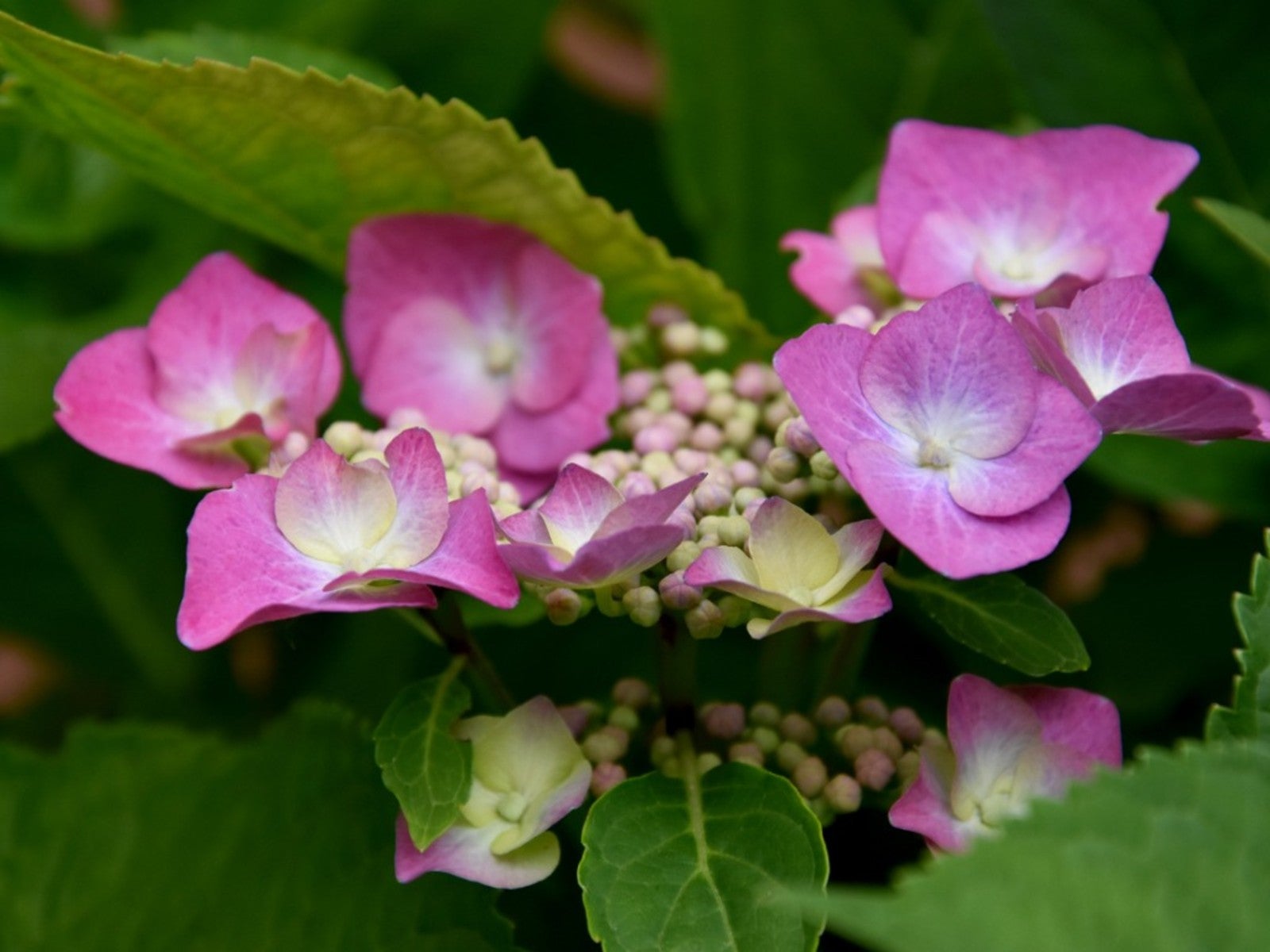Lacecap Hydrangeas: Growing Mountain Hydrangea Shrubs


Learning more about the various types of hydrangea available to the home landscaper is a sure way to better select and care for new plantings. While most of us are familiar with paniculata and mophead shrubs, less familiar forms are also gaining popularity. Among these, plants like lacecap hydrangea or mountain hydrangea, are finding their way into flower borders and hedge plantings.
What is a Mountain Hydrangea?
Native to regions of Japan and Korea, Hydrangea serrata is often referred to as mountain hydrangea. This group, which frequently includes various cultivars of lacecap hydrangeas, is prized for its ornamental beauty and unique flower clusters. Blooms range in color from blue to pinkish red, depending upon soil pH, and feature a flattened cluster of flowers.
Growing Mountain Hydrangea
When growing mountain hydrangea you’ll first need to consider the specific needs of the plant. Your planting site should receive ample sunlight, but will benefit from partial afternoon shade. Lacecap hydrangeas will also need well draining soil and sufficient space as the plant grows and reaches maturity. Due to their interest, it’s likely that mountain hydrangea plants are available at most local garden centers. Transplants are best moved into the garden in the early spring or in fall.
To plant, simply dig a hole that’s approximately twice the width and depth of the hydrangea’s root ball. Gently remove the plant from the pot and place it into the planting hole. Carefully backfill the hole with soil and water the new planting well. Continue to monitor the planting until new growth resumes and the plant has become established.
Mountain hydrangea care is relatively simple, but may require routine irrigation when growing in regions which are especially dry or hot throughout the summer months.
Remove faded blooms as soon as the plant’s flowering has ceased. Pruning will also be necessary to promote continued blooming. Since flowers will only be produced on old wood, pruning at the proper time is crucial. Dead branches can be removed in early spring, once new growth has resumed. Exceptionally cold winter temperatures may also damage plants.
Gardening tips, videos, info and more delivered right to your inbox!
Sign up for the Gardening Know How newsletter today and receive a free copy of our e-book "How to Grow Delicious Tomatoes".

Tonya Barnett has been gardening for 13 years. Flowers are her passion. She has transformed her backyard into a cut flower garden, which she regularly chronicles on her YouTube channel http://www.youtube.com/@tonyawiththeflowers.
-
 Looking For Plants To Give You The Soft And Fuzzies? Try These 5 Fuzzy Leaf Plant Options
Looking For Plants To Give You The Soft And Fuzzies? Try These 5 Fuzzy Leaf Plant OptionsLovers of texture, drama, silver foliage and tactile plants will adore these special sensory garden additions. These fuzzy leaf plant options will leave you all aglow
By Susan Albert
-
 Get Ready For A Summer Of Hummers! Grow These Full Sun Hummingbird Plants and Flowers
Get Ready For A Summer Of Hummers! Grow These Full Sun Hummingbird Plants and FlowersIf you’re lucky enough to enjoy a sunny backyard, make sure you are maxing out on your pollinator opportunities and grow these full sun hummingbird plants and flowers
By Tonya Barnett